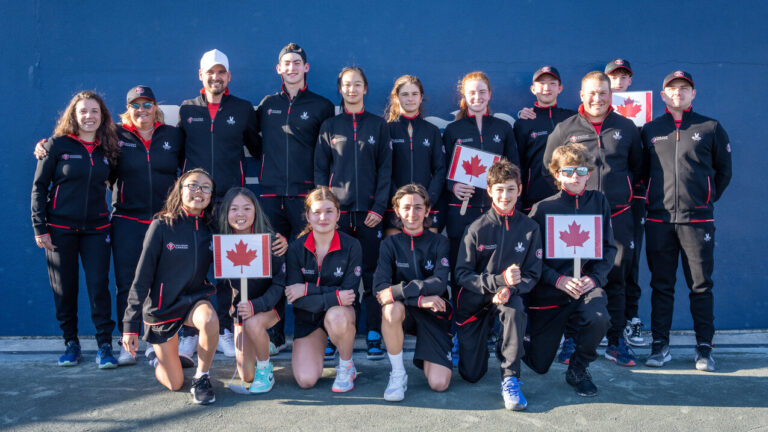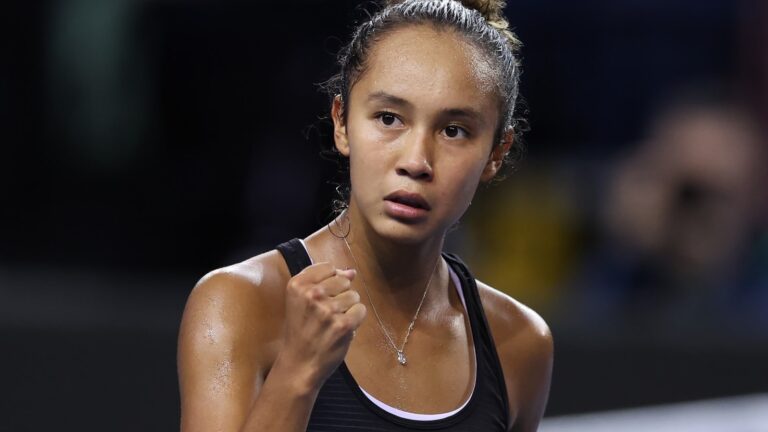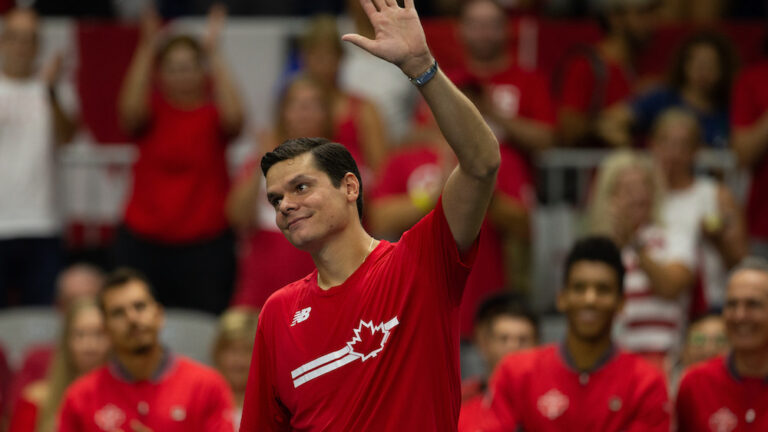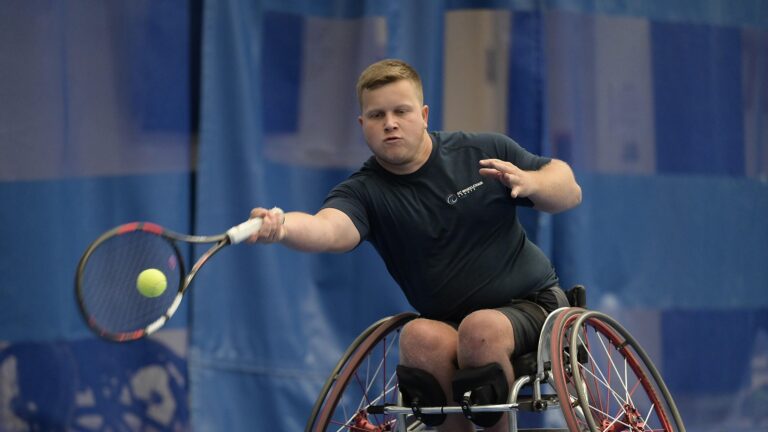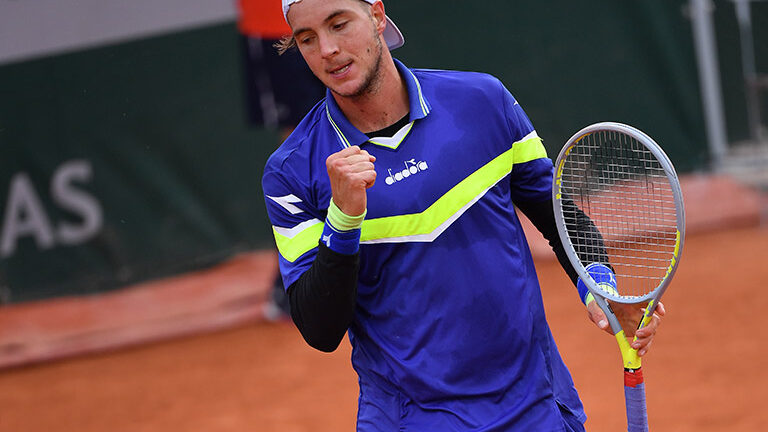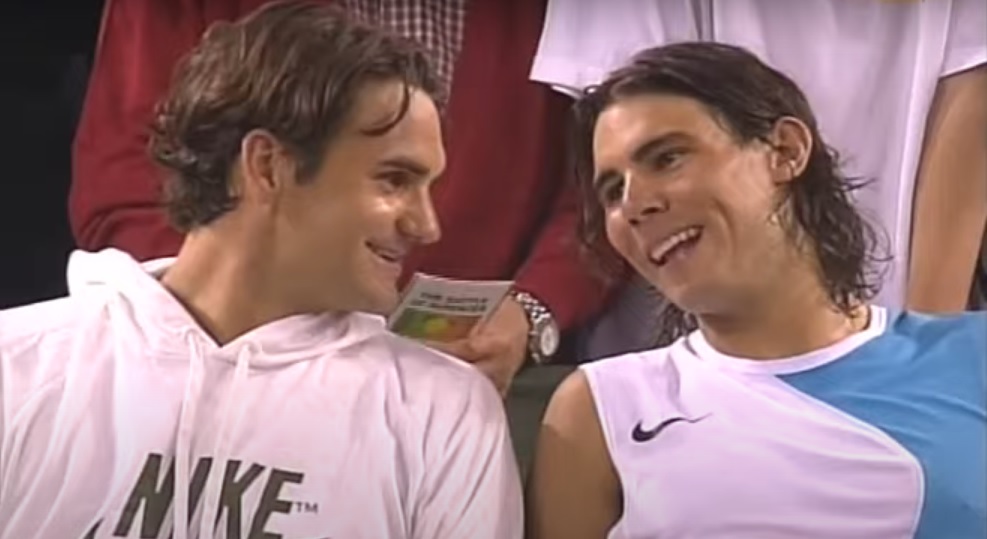
Photo : Battle of the Surfaces
Rumour has it that it may resurface.
The timing couldn’t be more perfect. Here we are between the two most strikingly different seasons in tennis, as players shift from soft clay to speedy grass.
Having only a few weeks to transition is tough, even for the best of them. Now, imagine having to make the switch every time you change ends.
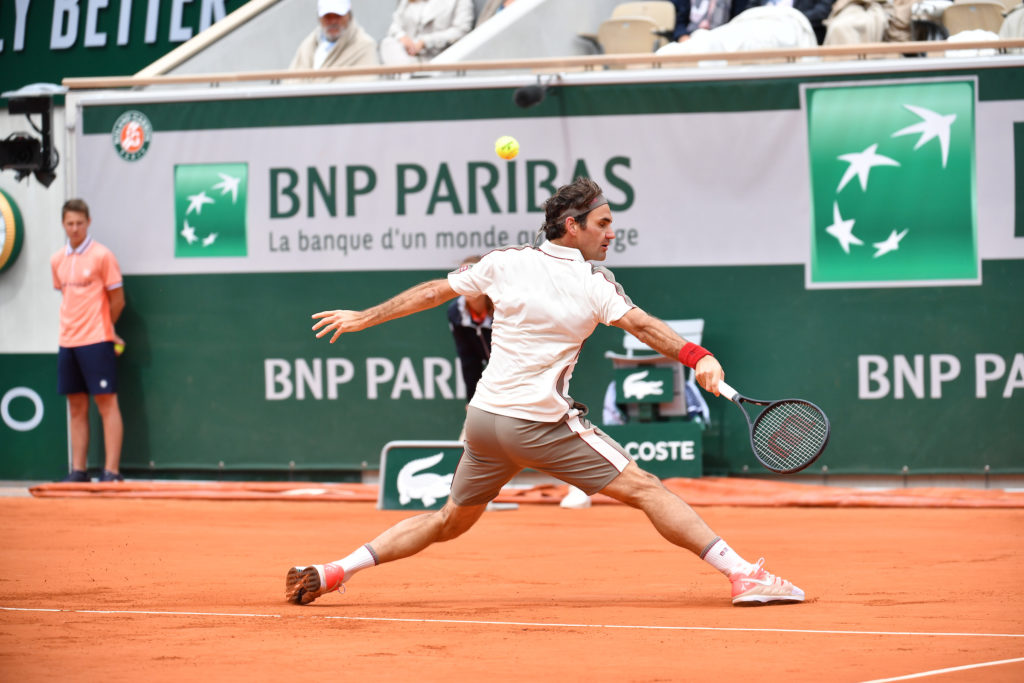
Players tried it once, 14 years ago, in an exhibition match that made history for its originality and heavy hitters: Roger Federer vs. Rafael Nadal.
The Battle of the Surfaces was played on May 2, 2007, to determine which of the two superbly skilled specialists—the King of Grass or the King of Clay—was the most well-rounded.
With Federer constantly winning on grass and Nadal constantly winning on clay, why not have the two players and two surfaces collide? Back then, Roger was on a 5-year, 48-match winning streak on grass. Nadal was on a 3-year, 72-match run on clay. It was a dream matchup.
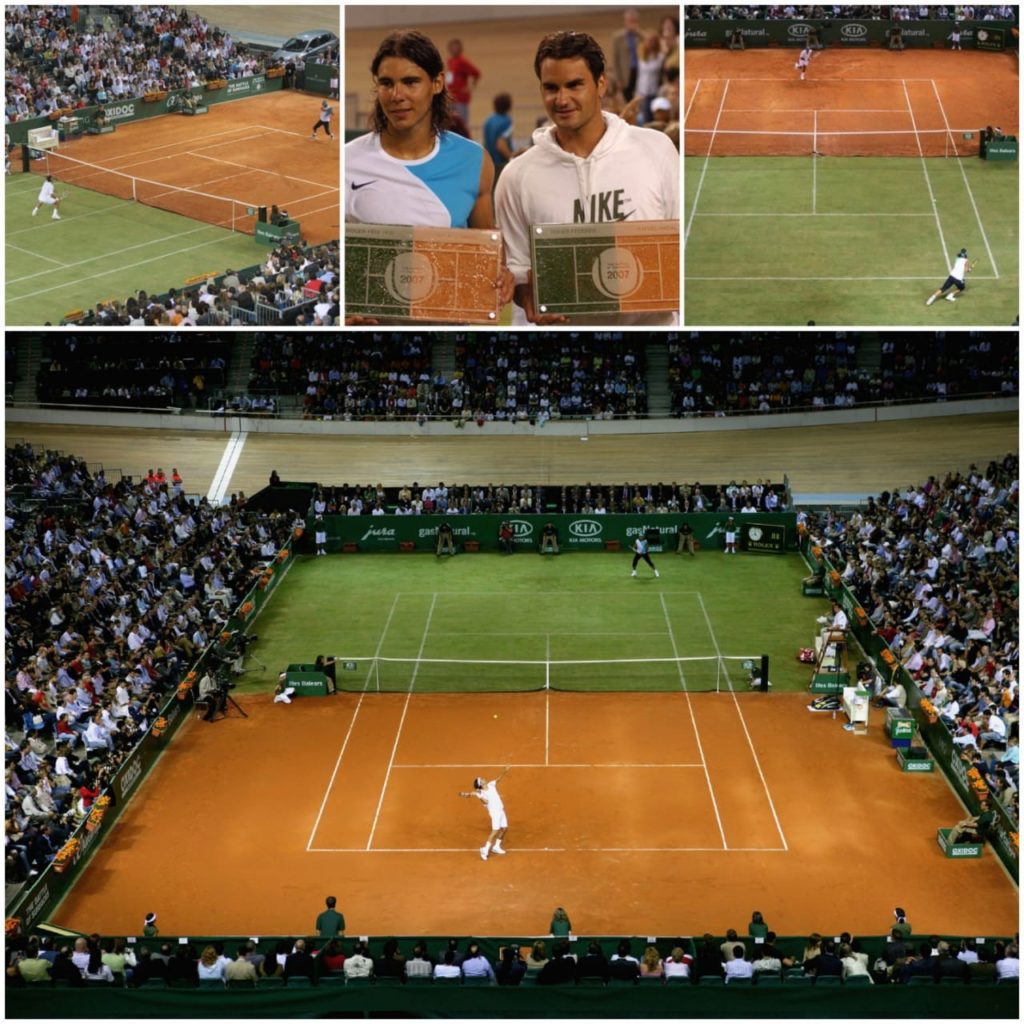
Half green and half orange, the court was patched together in an arena in Palma, on Nadal’s home island of Mallorca. The hybrid surfaces required $1 630 000 and 19 days to build. The clay side was a breeze, but the grass was infested with worms and was wearing away quickly just a few days before things were supposed to get underway. The night before the match, 400 square metres of fresh grass were shipped in from a nearby golf course.
Because pros are used to playing in shoes with soles adapted to the surface, watching Nadal and Federer rush to change their sneakers at every changeover was pretty comical. Lucky for them, they were given 120 seconds instead of the regular 90.
To the applause of 7 200 spectators, most of which were fellow Spaniards, Rafa triumphed 7-5, 4-6, 7-6(10). Knowing how gentlemanly both players are, it’s likely that Federer would have won by an equally tight margin if the match had been played in Geneva.
Head over to YouTube to relive the event.

Now that we’re all up to speed on the background story, should they do it? Who should do it?
It takes an all-round player to win on both courts. Right now, the obvious choice is Novak Djokovic, who’s just inched closer to Fed and Rafa with his 19th Grand Slam. That’s a bunch on the hard court, five on grass and two on clay, which has never been easy for him.
Would Nadal be the other obvious choice considering he also has only two crowns on grass, his least lucrative surface?
What if they said no? Then who?
What about Medvedev, Tsitsipas, Thiem or Zverev?
We already know that World No.2 Daniil Medvedev doesn’t love clay.
Reigning US Open champion Dominic Thiem, who has been Rafa’s designated successor on the dirt for a while now, would be a great choice.
So would a young gun like Stefanos Tsitsipas, who’s been fantastically consistent on all surfaces, or Alexander Zverev, who’s done better than the Greek titan at the Slams.
Who would you nominate? Write to me and let me know!
The battle of August the 8th
One is about to blow 40 candles, the other, only 21.
Both born on August 8, the great Roger Federer and our young compatriot Félix Auger-Aliassime were facing each other for the very first time in their careers on Wednesday.
For the last decade or so, each time a Canuck has faced one of these living legends, I’m extremely interested and also torn. As I mentioned earlier, I’m a diehard fan of Federer and I love to see him win. As you might have guessed, though, I’m the same way about the Canadian players. So, these matches are rather stressful to watch.
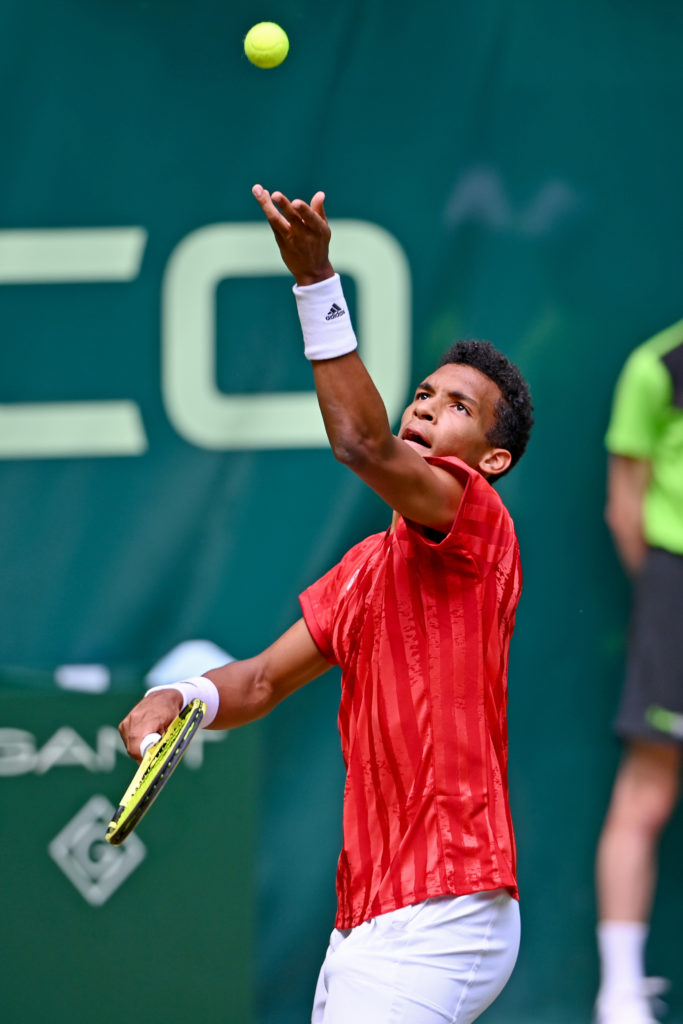
The Quebecer needed two very specific variables to be in his favor in order to win. Firstly, that Federer would have a so-so day at the office and, secondly, being able to sustain long rallies like the one he won, at 15-15 in the 13th game of the second set, when it was Federer who committed the mistake on the 26th shot!
Of course, he missed his first eight break point opportunities and frustration could have sunk in. But far from being frustrated, “FAA” showed great maturity. Not only in breaking Federer in the first game of the ultimate set, but following on serve with FOUR ACES in a row in a game that lasted 72 seconds. And then, he followed with another break.
And the rest is (his) history.
The first battle of August 8 is behind him. The victory of June 16 won’t be forgotten in a hurry.
For complete details on the match, read our coverage here.
So close
“Put your work twenty times upon the anvil,” wrote 17th-century poet and critic Nicolas Boileau-Despréaux.
In other words, keep your nose to the grindstone.
That brings me to the final on the grass at MercedesCup in Stuttgart, in which Félix Auger-Aliassime fell to Marin Cilic in two sets (7-6(4), 6-3).
Another final lost.
Before we start combing through the statistics, it’s important to remember that thousands upon thousands of players have never competed in a single ATP final (or semifinal, for that matter). Félix, who’s 20, has found his way to eight. That’s eight incredible feats.
Before the bad news, let’s consider the good news: Félix Auger-Aliassime is fourth among the players with the most ATP final appearances before they turned 21. Take a look at the three who come before him. Pretty good company, I’d say.
ATP finals before turning 21
- Rafael Nadal 25
- Novak Djokovic 13
- Andy Murray 9
- Félix Auger-Aliassime 8
MercedesCup was the eighth final from which Auger-Aliassime left empty-handed: 0-8 matches and 0-16 sets in about two and half years.
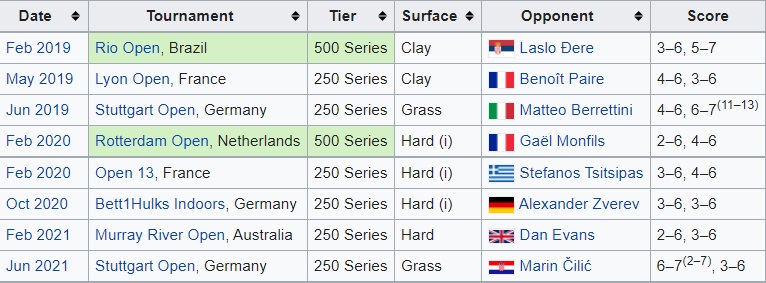
The more losses he accumulates, the more weight he must feel on his shoulders, even though he tried his best to be reassuring after Stuttgart: “Today, I’m not facing a final, I’m facing Marin Cilic. It’s two different things. There have been times when I haven’t played my best, when I felt I wasn’t playing well, but, this time around, I felt like it was close. But overall, I think he was a better player.”
You may be wondering how Félix currently fares in tennis history. Not so great, since he’s shuffling toward an unhappy record.
According to Andras Ruszanov at www.db4tennis.com, Cédric Pioline dropped nine finals (in three and a half years) before finally securing the first of his five ATP winner’s trophies. Same for Pat Dupre of the US. Julien Benneteau was defeated in 10 ATP finals (in six and a half years).
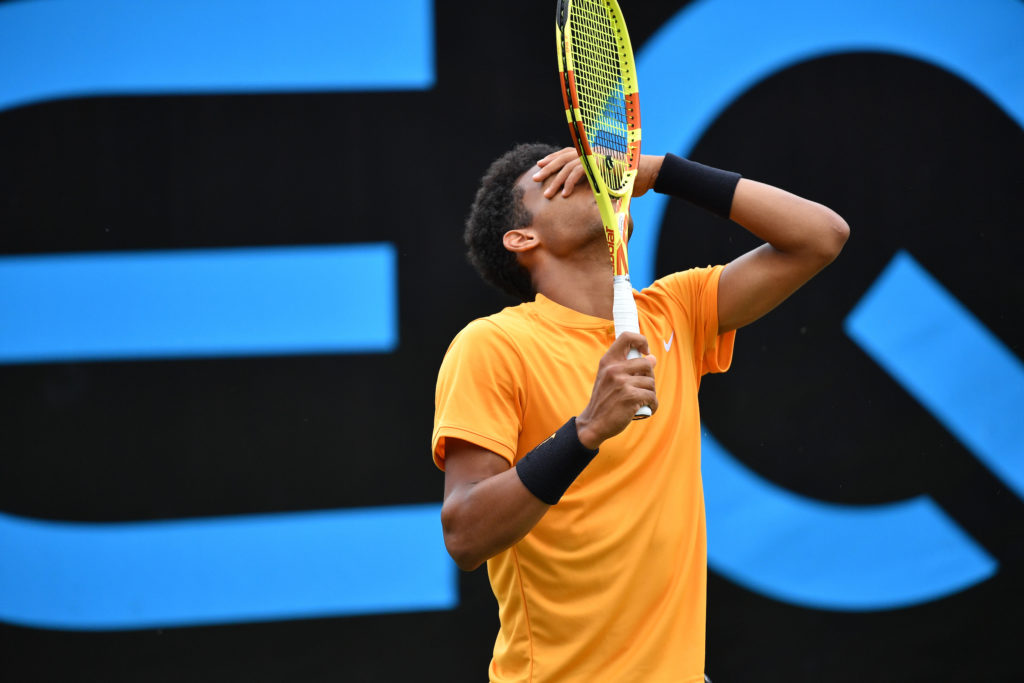
That said, I’d rather wrap things up on a positive note with some words of wisdom for Félix.
“It always seems impossible until it’s done”
Nelson Mandela (anti-apartheid revolutionary, political leader, former president of South Africa and winner of the Nobel Peace Prize)
“A quitter never wins, and a winner never quits.”
Napoleon Hill (American author)
“A winner is just a loser who tried one more time.”
George Moore (Irish novelist)
“Success is not final, failure is not fatal: it is the courage to continue that counts”
Winston Churchill (British statesman and former prime minister of the United Kingdom)
Will Maria and Stefanos ascend Mount Olympus?
Of all tennis’ great champions, none are Greek.
But if the recent French Open performances by Maria Sakkari and Stefanos Tsitsipas are any indication, the Hellenic drought is likely to end soon.
While Maria was stopped in the semis, Stefanos embarked on the final climb but was knocked back down to earth by a ruthless Novak Djokovic.
Sakkari and Tsitsipas are the future of Greek tennis, whose blue and white flag was rarely seen in the final rounds of ATP or WTA draws prior to 2018.
Maria Sakkari, 25 years old, sits at a career-high ranking of World No.18. As for 22-year-old Tsitsipas, he’s currently World No.4.
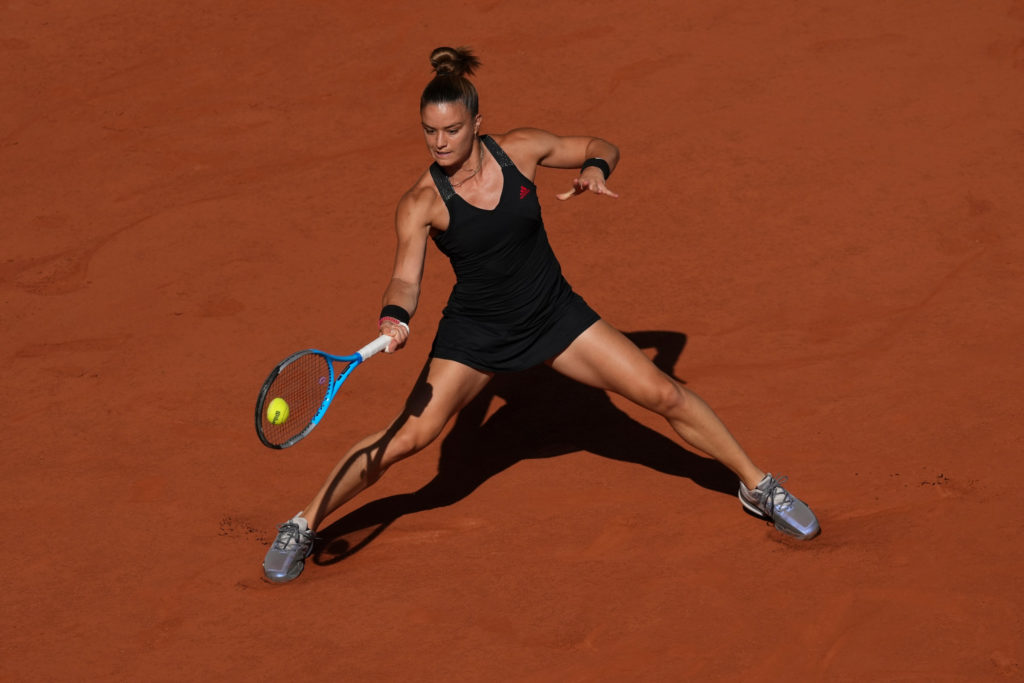
Before them? There weren’t many.
Besides Eleni Daniilidou, who won five WTA titles and rose to No.14, names like Stamatia Fafaliou, Eirini Georgatou, Paris Gemouchidis, Anna Gerasimou, Alexandros Jakupovic and Konstantinos Economidis probably don’t ring a bell.
What about Pete Sampras? Mark Philippoussis?
Pistol Pete is American. He was born in Washington, D.C. to Sammy Sampras and Georgia Vroustouris, who emigrated from Sparta. As for Philippoussis, he was born in Melbourne, Australia. His father Nikolaos is Greek. They both get full points for their heritage but it doesn’t make them Greek.
Do Maria and Stefanos have any heir apparents? Not really.
After Sakkari is 28-year-old Despina Papamichail (No. 258), followed by 24-year-old Valentini Grammatikopoulou (No. 278). On the men’s side, the next in line is 24-year-old Michail Pervolarakis (No. 492).
There’s also the younger Tsitsipas, who’s No. 944. Petros isn’t setting the world on fire, but his brother’s name and success bring perks that even higher ranked players only dream of, including A LOT of wildcards.
There’s no doubt that Maria Sakkari and Stefanos Tsitsipas will get more and more young Greek players out on the tennis courts. It only takes one or two examples. Just look at Canada: without Eugenie Bouchard and Milos Raonic, would Bianca, Leylah, Denis and Félix have followed? And so quickly?
You gotta start somewhere!
Get in touch with me!
Email: privard@tenniscanada.com
Twitter: @paul6rivard
Follow all our Canadians in action here.
